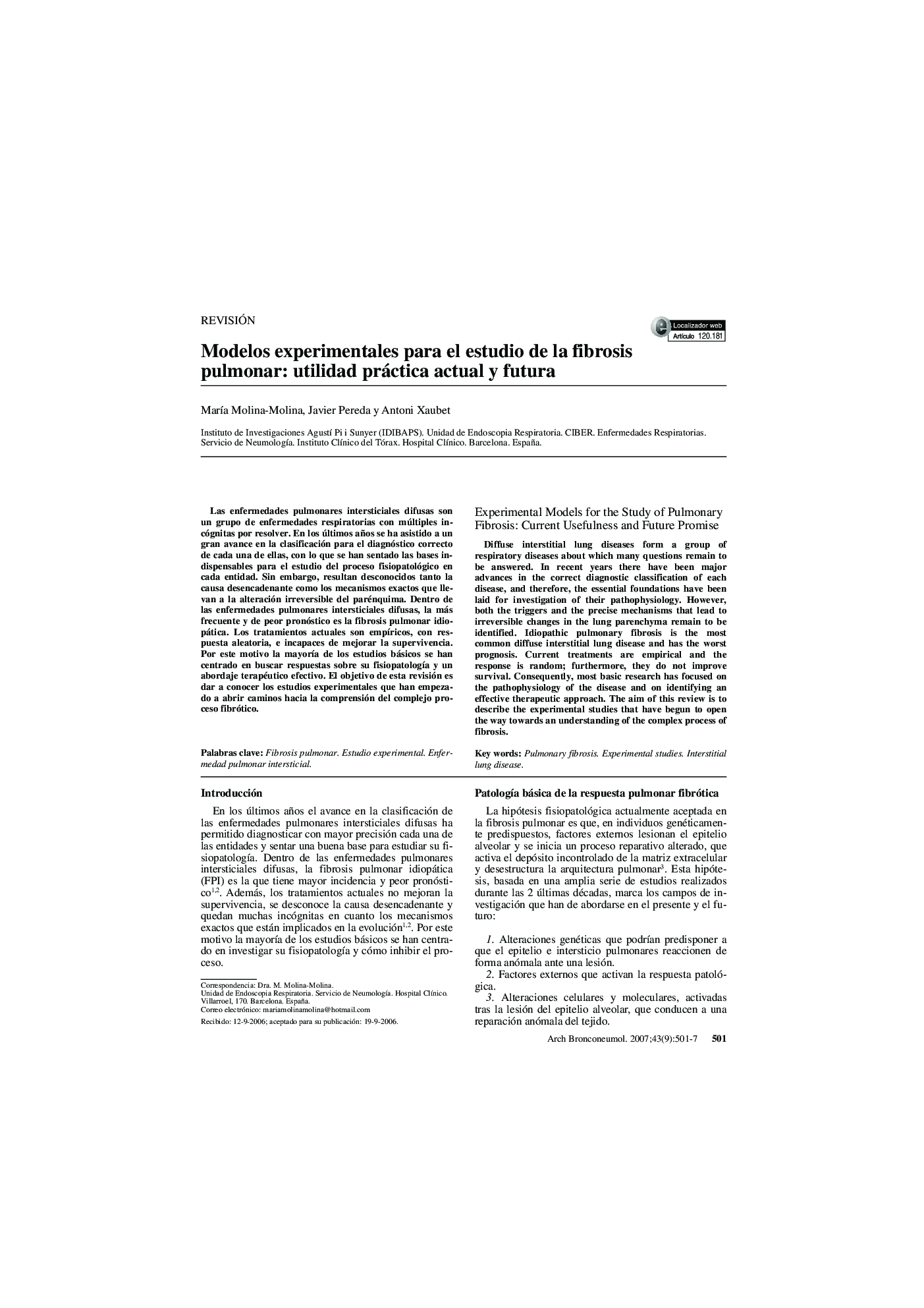| Article ID | Journal | Published Year | Pages | File Type |
|---|---|---|---|---|
| 4204527 | Archivos de Bronconeumología | 2007 | 7 Pages |
Abstract
Diffuse interstitial lung diseases form a group of respiratory diseases about which many questions remain to be answered. In recent years there have been major advances in the correct diagnostic classification of each disease, and therefore, the essential foundations have been laid for investigation of their pathophysiology. However, both the triggers and the precise mechanisms that lead to irreversible changes in the lung parenchyma remain to be identified. Idiopathic pulmonary fibrosis is the most common diffuse interstitial lung disease and has the worst prognosis. Current treatments are empirical and the response is random; furthermore, they do not improve survival. Consequently, most basic research has focused on the pathophysiology of the disease and on identifying an effective therapeutic approach. The aim of this review is to describe the experimental studies that have begun to open the way towards an understanding of the complex process of fibrosis.
Keywords
Related Topics
Health Sciences
Medicine and Dentistry
Pulmonary and Respiratory Medicine
Authors
MarÃa Molina-Molina, Javier Pereda, Antoni Xaubet,
